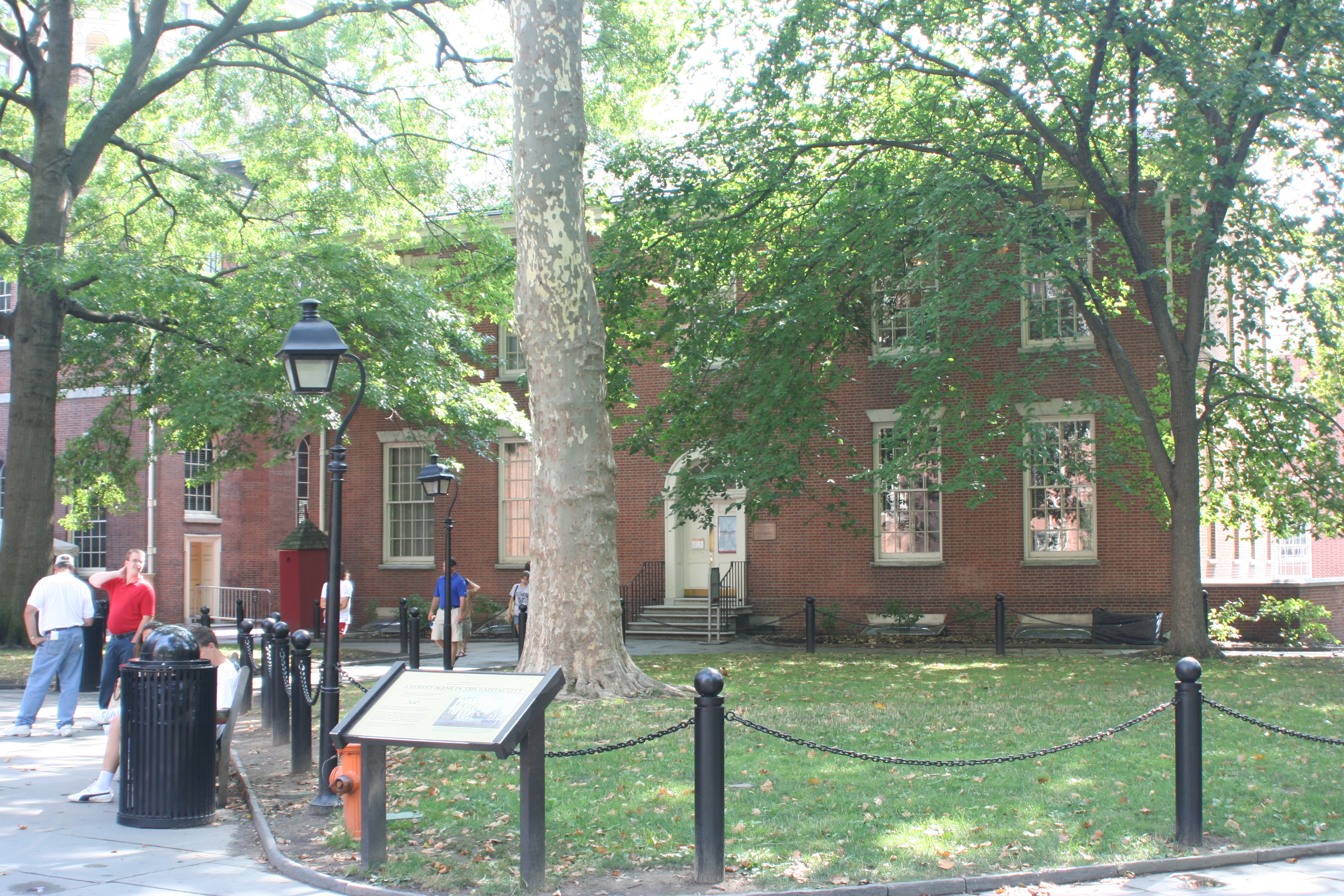- American Philosophical Society
Infobox_nrhp | name =American Philosophical Society Hall
nrhp_type = nhl

caption = American Philosophical Society, 2006
location= 104 S. Fifth St.Philadelphia ,Pennsylvania
lat_degrees = 39
lat_minutes = 56
lat_seconds = 55.51
lat_direction = N
long_degrees = 75
long_minutes = 8
long_seconds = 59.42
long_direction = W
locmapin = Pennsylvania
area =
built =1768
architect=Samuel Vaughan
architecture= Georgian
added =October 15 ,1966
governing_body = Private
refnum=66000675cite web|url=http://www.nr.nps.gov/|title=National Register Information System|date=2007-01-23|work=National Register of Historic Places|publisher=National Park Service] The American Philosophical Society is a discussion group founded in 1743 byBenjamin Franklin as an offshoot of his earlier club, theJunto . Through research grants, published journals, the upkeep of an extensive library, and regular meetings, the society continues to advance careful study in a wide variety of disciplines in thehumanities and thescience s.History
From the beginning, the Society attracted some of America's finest minds. Early members included
George Washington ,John Adams ,Thomas Jefferson ,Alexander Hamilton ,Thomas Paine ,David Rittenhouse ,Owen Biddle ,Benjamin Rush ,James Madison ,Michael Hillegas , andJohn Marshall . The Society also drew philosophers from other nations as members, includingAlexander von Humboldt , theMarquis de Lafayette ,Baron von Steuben ,Tadeusz Kościuszko , andYekaterina Romanovna Vorontsova-Dashkova .By
1746 the Society had lapsed into inactivity. In1767 , however, it was revived, and, onJanuary 2 ,1769 , it united with the American Society for Promoting Useful Knowledge under the name "American Philosophical Society Held at Philadelphia for Promoting Useful Knowledge".Benjamin Franklin was elected first president of the group. [ [http://en.wikipedia.org/wiki/New_International_Encyclopedia New International Encyclopedia] ]After the
American Revolution , the Society looked forleadership toFrancis Hopkinson , one of the signatories of the Declaration of Independence. Under his influence, the Society received land from the government ofPennsylvania , along with a plot of land in Philadelphia where Philosophical Hall now stands.Illustrious names have continually been added to the membership roster, reflecting the society's scope.
Charles Darwin ,Robert Frost ,Louis Pasteur ,Elizabeth Cabot Agassiz ,John James Audubon ,Linus Pauling ,Margaret Mead ,Maria Mitchell , andThomas Edison became members of the Society. The Society continues to attract names of high renown today, with a current membership list (as of the April 2005 elections) of 920 members, including 772 Resident members (citizens or residents of the United States) and 148 Foreign members representing more than two dozen countries.Awards
In 1786, the Society established the
Magellanic Premium , a prize for achievement in "navigation,astronomy , or natural philosophy", the oldest scientific prize awarded by an American institution, which it still awards. Other awards include the Barzun prize for cultural history,Judson Daland Prize for Outstanding Achievement in Clinical Investigation, theFranklin medal , theLashley award forneurobiology , theLewis award , and theJefferson medal for distinguished achievement in the arts, humanities, or social sciences.Publications
The APS has published the "Transactions of the American Philosophical Society" since 1771. Currently five issues appear each year. The "Proceedings" have appeared since 1838: they publish the papers delivered at the biannual meetings of the Society. The Society has also published the collected papers of
Benjamin Franklin ,Joseph Henry ,William Penn , andLewis and Clark .Museum
The American Philosophical Society Museum host exhibitions exploring history, art, and science using its collections. Opened in 2001, the museum is located at the Society's Philosophical Hall, adjacent to Independence Hall, at 104 South Fifth Street in Philadelphia. The Museum in Philosophical Hall features revolving, thematic exhibitions that explore the intersections of history, art, and science. It includes a focus on the early days of
Philadelphia and the nation. Exhibitions include works of art, scientific instruments, original manuscripts, rare books, natural history specimens, and curiosities of all kinds from the APS's own collections, along with one-of-a-kind objects on loan from other institutions. [citation | title= American Philosophical Society Museum: About | publisher=ARTINFO | year=2008 | url= http://www.artinfo.com/galleryguide/22252/8770/about/american-philosophical-society-philadelphia/ | accessdate=2008-07-25 ]Admission donations are requested.
References
External links
* [http://www.amphilsoc.org The American Philosophical Society]
* [http://www.apsmuseum.org/ American Philosophical Society Museum]
* [http://www.dianepublishing.net/American_Philosophical_Society_s/460.htm American Philosophical Society publications]
* [http://www.scholarly-societies.org/history/1743aps.html Notes on the American Philosophical Society from the Scholarly Societies project]
* [http://hdl.loc.gov/loc.pnp/hhh.pa1081 Listing and photographs of Philosophical Hall] at theHistoric American Buildings Survey
* [http://www.philadelphiabuildings.org/pab/app/pj_display.cfm/19493 Listing of Philosophical Hall] at Philadelphia Architects and Buildings
Wikimedia Foundation. 2010.
